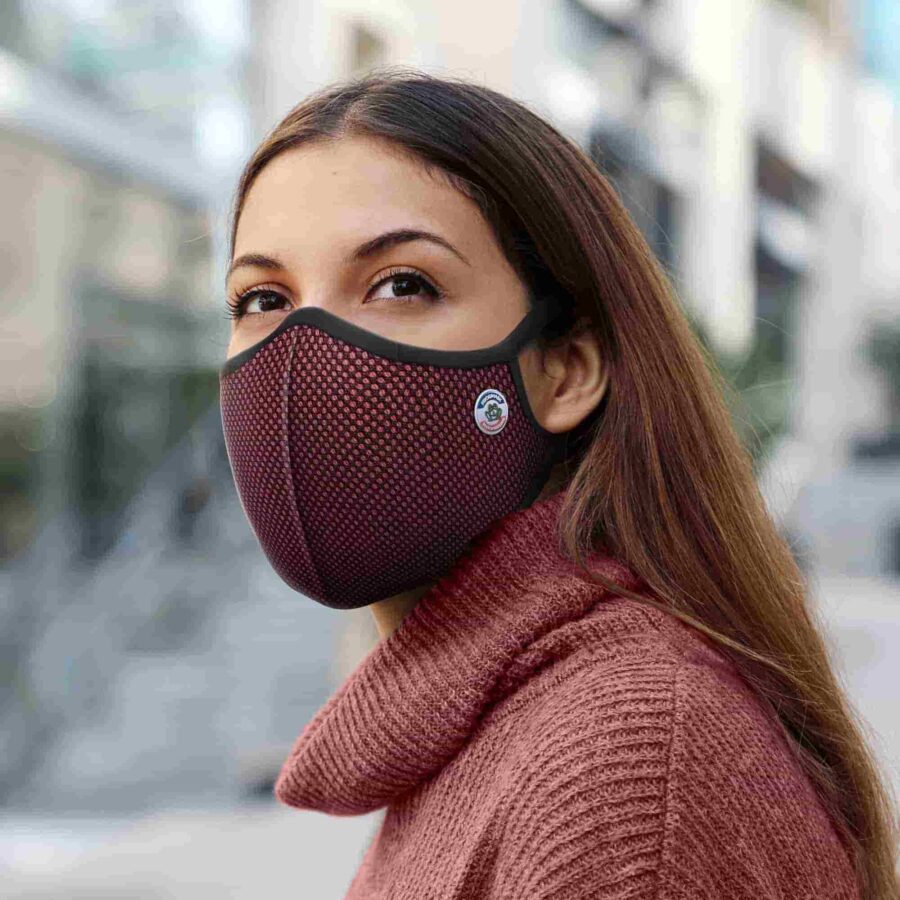
How to choose your respiratory face mask ?
N95 respirators, surgical masks, face masks, and barrier face coverings offer different levels of protection for the wearer from particles. The Covid19 pandemic has put a huge spotlight on respiratory face masks and new standards have been created to address the shortage of masks in early containment. Which mask to wear in which circumstances? Here are some explanations to help you understand.
What is air pollution ?
We need to breathe 15,000 litres of air a day to provide our bodies with the oxygen they need. This exposure makes the environment the main threat to our lungs. Indeed, air pollution is the leading cause of death in the world with 9 million deaths per year.
There are many particles in the air we breathe every day. There are fine and ultra-fine particles (PM10, PM2.5, PM0.1), gases (nitrogen oxide, sulphur oxides, carbon monoxide, VOCs or Volatile Organic Compounds…), pollens, moulds, bacteria and viruses, and even odours.
The size of these particles is measured in microns (µm) by associating PM (for “Particulate Matter”) in front of them, from the largest like dust (PM100) to tobacco smoke (PM 0.1). Viruses are even smaller from 0.01 onwards, and even smaller are the gaseous contaminants or the famous diesel particles. In comparison, the diameter of a hair is between 50 and 70 µm.

The filters for measuring air quality are generally PM10; these are the ones used by Airparif. The current objective is to achieve an annual average of 30 µg/m3, which is below the annual average of 40 µg/m3, which is the limit value for the protection of human health for PM10. The European Union has set a target of 20μg/m3 on average over the year for PM10.
What are the different types of face masks?
Respiratory protection mask
This is personal protective equipment (PPE), meeting the European standard NF EN 149 + A1: 2019 if they are dust masks without removable filters (usually disposable unless the mask has a full seal inside, in which case it can be cleaned and reused) and to European standard EN1827 +A1 August 2009 for respiratory protective devices – Half masks without inhalation valve and with removable filters, against gases, against gases and particles, or against particles only. The filtration requirements are identical. Both standards demonstrate compliance with the essential health and safety requirements set out in the European PPE Regulation 2016/425, which protects the wearer of the mask against the inhalation of dusts, solvents or gases.
There are three efficiency classes: FFP for disposable aerosol filtering facepiece masks and FMP for reusable aerosol filtering facepiece masks. Levels 1, 2 and 3 for these two categories meet the same requirements.
They are defined according to their filtration performance against a sodium chloride aerosol composed of particles with a mass median diameter of 0.6 microns and against a paraffin oil aerosol with a mass median diameter of 0.4 microns at a flow rate of 95 L/min)
FFP1 or FMP1 face mask (with yellow earloops)
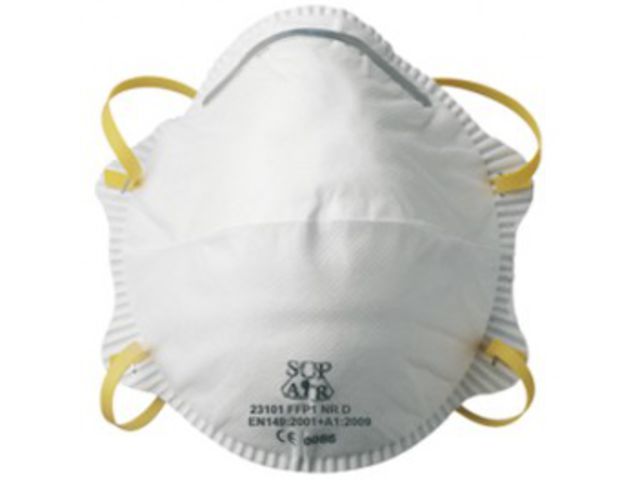
Particulate filtering half mask NF EN 149 + A1 : 2019 FFP1 NR
Particle filtering half-masks NF EN 149 + A1 : 2019 FFP1 RD
Extension NR = The use of the half mask is limited to one working day.
Extension R = The filtering half mask can be used for more than one working day, so it can be reused (often after washing/cleaning)
Extension D = The filtering half mask is designed to be resistant to clogging (ability of the mask to function effectively and protect the airways without interruption in extremely dusty environments) and has been tested.
Minimum filtration level :
The half mask must filter out at least 80% of the particles in these aerosols
Maximum inward leakage rate (ILR) :
The leakage rate determines the quantity of air that does not pass through the filter and is therefore not filtered, supplemented by the penetration or filtration rate, which is the percentage of particles retained by the filter. Note that the more filtering a mask is, the more it will hinder breathing.
Half-filtering masks must not have an ILR of more than 22%.
Maximum breathing resistance :
– Inspiration 30 L/min : 0,6 mbar
– Inspiration 95 L/min : 2,1 mbar
– Expiration 160 L/min : 3,0 mbar
Sealing :
If marked D, the mask is designed to be resistant to clogging. After clogging, the inspiratory and expiratory resistances must not exceed: 4.0 mbar
Class FFP1 respirators are suitable for working environments where no fibrous or toxic aerosols or dust are present. This is often the standard used for DIY masks. Their use does not protect the respiratory tract from irritation or odour. It also protects, in the context of the coronavirus, from sprays that one could receive.
FFP2 or FMP2 face mask (with white or blue earloops):
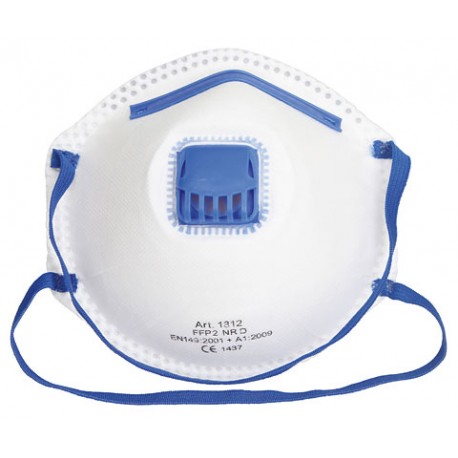
Particle filtering half mask NF EN 149 + A1 : 2009 FFP2 NR
Particle filtering half mask NF EN 149 + A1 : 2009 FFP2 RD
NR = The use of the particulate filtering half mask is limited to one working day.
R = The particulate filtering half mask can be used for more than one working day.
D = The particulate filtering half mask is designed to be resistant to clogging and has been tested.
Minimum filtration level :
The filtering half mask must filter out at least 94% of the particles in these aerosols
Maximum inward leakage rate (ILR) :
Half-filtering masks must not have an ILR of more than 8%
Maximum breathing resistance :
– Inspiration 30 L/min : 0,7 mbar
– Inspiration 95 L/min : 2,4 mbar
– Expiration 160 L/min : 3,0 mbar
Sealing :
If marked D, the mask is designed to be resistant to clogging. After sealing, the inspiratory and expiratory resistances must not exceed: 5.0 mbar
The FFP2 standard, which is only valid for Europe, is similar in terms of effectiveness to the American N95 and Chinese or Korean KN95 standards.
These are the masks that are used in hospitals but also in professions exposed to aerosols, fumes and smoke. FFP2 norm is also the minimum recommended quality level to protect your lungs if your travel in Asia.
FFP3 or FMP3 face mask (with red earloops):

Particle filtering half mask NF EN 149 + A1 : 2009 FFP3 NR
Particle filtering half mask NF EN 149 + A1 : 2009 FFP3 RD
NR = The use of the particulate filtering half mask is limited to one working day.
R = The particulate filtering half mask can be used for more than one working day.
D = The particulate filtering half mask is designed to be resistant to clogging and has been tested.
Minimum filtration level :
The filtering half mask must filter out at least 99% of the particles in these aerosols
Maximum inward leakage rate (ILR) :
Half-filtering masks must not have an ILR greater than 2%.
Maximum breathing resistance :
– Inspiration 30 L/min : 1,0 mbar
– Inspiration 95 L/min : 3,0 mbar
– Expiration 160 L/min : 3,0 mbar
Sealing :
If marked D, the mask is designed to be resistant to clogging. After clogging, the inspiratory and expiratory resistances must not exceed: 7.0 mbar
These are masks that protect against toxic, radioactive and carcinogenic substances as well as pathogens such as viruses, bacteria and fungi. These masks are mainly used in the chemical industry and some hospital departments. Today they are almost impossible to find and are of no use to the general public when compared to Covid.
The FFP3 standard, which is only valid for Europe, is similar in terms of effectiveness to the American N99 and Chinese or Korean KN99 standards.
WARNING : FFP3+” is a pure marketing invention!
All disposable and non-disposable respirators must be CE marked with the number and year of the standard (EN 149: 2019), the filtration class (FFP1, 2 or 3) and the letter indicating possible reuse (R).

Face mask for medical use
This is a medical device that complies with the NF EN 14683 standard, which, by preventing the projection of droplets emitted by the wearer of the mask, limits the contamination of the external environment and of other people.
There are several types: type I, type II and IIR. Type II and IIR are intended for use in surgery.
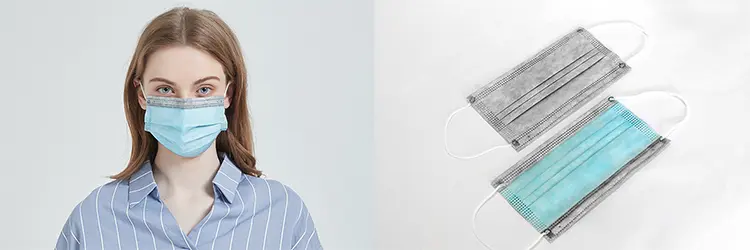
Type I face mask :
Mask for medical use NF EN 14683 + AC : 2019
Minimum bacterial filtration efficiency (BFE) :
The bacterial filtration efficiency (BFE) of the mask must be greater than 95%.
Breathability :
The differential pressure in the medical mask must be less than 40 Pa/cm².
Microbial cleanliness :
The microbial load of the medical mask must be ≤ 30 CFU/g.
Type II face mask :
Mask for medical use NF EN 14683 + AC : 2019 reserved for surgery
Minimum bacterial filtration efficiency (BFE) :
The bacterial filtration efficiency (BFE) of the mask must be greater than 98%.
Breathability :
The differential pressure in the medical mask must be less than 40 Pa/cm².
Microbial cleanliness :
The microbial load of the medical mask must be ≤ 30 CFU/g.
Type IIR face mask :
Mask for medical use NF EN 14683 + AC : 2019 reserved for surgery
Minimum bacterial filtration efficiency (BFE) :
The bacterial filtration efficiency (BFE) of the mask must be greater than 98%.
Breathability :
The differential pressure in the medical mask must be less than 60 Pa/cm².
Microbial cleanliness :
The microbial load of the medical mask must be ≤ 30 CFU/g.
Splash resistance :
The resistance of the medical mask to penetration by liquid splashes must comply with the minimum value of 16.0 kPa.
All masks for medical use must be CE marked
Non sanitary fabric face mask
In the light of the current evolving health situation related to COVID-19 and in response to an urgent request from the European Commission, CEN (European Committee for Standardisation) has developed a CWA (CEN Workshop Agreement) on barrier masks for the public.
In most European countries, barrier masks, which are often not included in the scope of regulations on personal protective equipment (PPE) and medical devices, have become a fundamental part of national strategies guiding the phasing out of containment measures. For this reason, the European Commission has identified the urgent need for a harmonised and consistent level of safety for barrier masks for the public.
Based on this need and in response to the urgency of the situation, CEN agreed to develop a CWA (CEN Workshop Agreement) under the guidance of AFNOR, the French standards body.
The new CWA 17553:2020 – Community face coverings – Guide to minimum requirements, methods of testing and use provides minimum requirements for the design, production and performance evaluation of public barrier masks.
Disposable face mask for civilian use
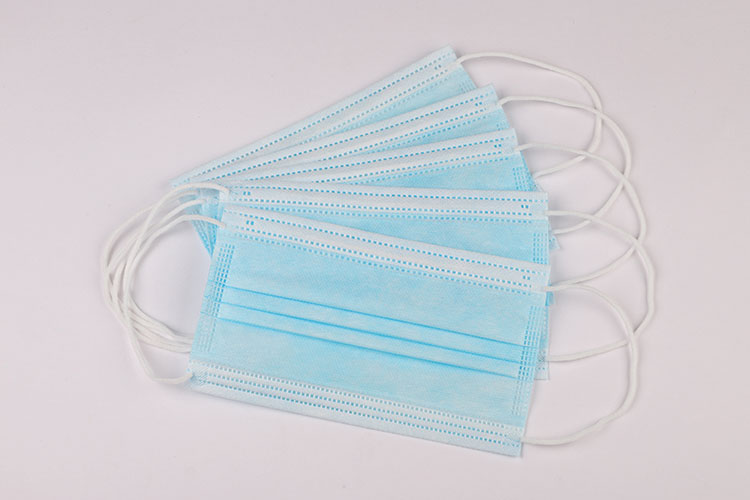
These are relatively simple paper masks which must nevertheless be CE marked. They filter the air breathed out by the wearer but provide very little protection from the air breathed in because they are generally open on the sides and therefore not very airtight.
Pollution face mask
Generally used for motorbike or bicycle trips in large cities polluted by industrial dust and exhaust fumes or by pollen allergy sufferers and/or asthmatics wanting to protect themselves from dust and pollen, these masks are not PPE but must still be CE marked.
These reusable textile or neoprene masks, equipped with permanent or removable filters, protect the wearer from particles in the air. Although they are equipped with exhalation valves (to facilitate the evacuation of air during physical effort, provided that they are placed in front of the mouth and not on the cheeks), they do not protect outsiders against viruses, as the air exhaled by the wearer is not filtered.
Frogmask are equipped with FFP2 filters and do not have exhalation valves because the 3D Mesh used is ultra breathable, so the valves are unnecessary.
Do it yourself face mask
These are non-standard, untested, home-made masks made of one or more strips of fabric, usually cotton. They protect others from the air breathed out by the wearer, especially from the famous droplets or sputters. They can meet a need for people who are not directly exposed.
What are the criteria for choosing a face mask ?
- Breathability
- Protection level/particle type
- Suitable for the face
A good mask should allow you to breathe and if possible easily, as the more a mask filters, the more it traps air through different layers that make breathing more difficult.
The mask should be suitable for the type of use you have and the particles you want to protect yourself against.
Finally, it must fit the face. If air gets in around the edges of the mask because the mask doesn’t stick to the skin, it loses as much of its filtration ability. This is why some brands offer different mask sizes. Beware of beards that are too full and no longer provide a seal. It is also important to choose masks with an adjustable metal bar at the nose so that the mask fits the contours of the nose and cheekbones as closely as possible.
To check the fit of a respiratory protection mask, there is a test called Fit-Check: if there is no leakage, on forced inhalation, with a plastic sheet or the hands on the filter, the mask sits lightly on the face, otherwise there is a leak.
There are different shapes of masks in heart, shell, alder leaf, duckbill … to satisfy different face shapes. The duckbill is said to be the most suitable for spectacle wearers as it helps to reduce the amount of misting that runs up the nose when exhaling.
Finally, the life span of most masks should be taken into account, which varies between 4 and 8 hours, especially for disposable masks. And reusable masks must be cleaned on the outside and inside, with a maximum number of washes.
In conclusion, let us remember that a mask is more useful to protect others than to protect oneself in the current context where many people do not know if they are carriers of the virus. It is the best way to limit the spread of the virus, but it should never replace the application of barrier measures.
